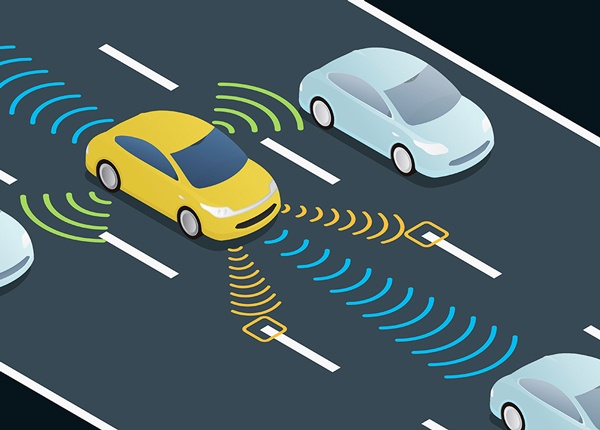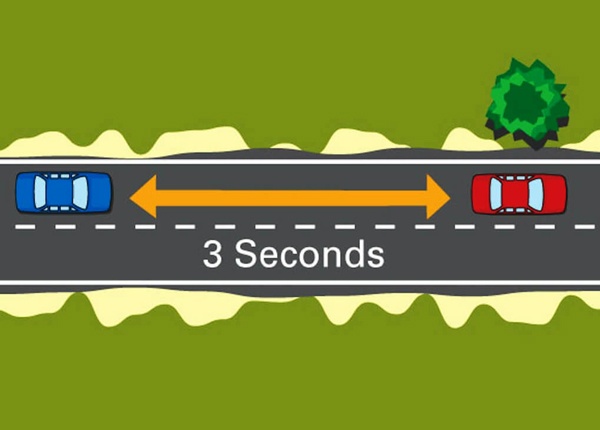
All Senses Matter to the Driver: Proprioception & Kinesthesia
Updated Dec. 15, 2020While most of the information we receive while driving is visual, our other senses are important too. In addition to sight, our brains collect information about the world around us via hearing, smell, taste and touch. The details provided by our five primary senses combine to create a more general sense referred to as “proprioception”. With good proprioception, our bodies are capable of kinesthesia – an instinctive awareness about where we are positioned in relation to other objects. Kinesthesia is the reason we can pick up the TV remote, or sit down on a chair, without looking at our target.
Let’s discuss the roles our other senses play, as they relate to the task of driving.
Hearing
Most drivers do not realize how much information they receive via their hearing while behind the wheel. It is true that this sense takes somewhat of a back seat when compared to vision, but you would quickly realize how heavily you rely on auditory information while driving if you suddenly lost your hearing.
Your eyes collect extremely detailed and actionable information, but it only relates to what is going on in front of you (and to some extent, to your sides). In contrast, your ears can tell you about events occurring behind you and in every direction, creating a picture of your driving environment 360° around the vehicle.
The auditory information you absorb while driving can bring potential and immediate dangers to your attention. For instance:
- The sound of an engine may alert you to a vehicle driving in your blind spot.
- A driver sounding their horn alerts you to a problem somewhere on the roadway.
- You will know an emergency vehicle is approaching before you can see it if it is sounding a siren.
- Hearing a whistle at a railway crossing warns you that a train is approaching.
- The sound of heavy machinery up ahead indicates that roadwork or construction is taking place.
Your hearing can also alert you to dangerous mechanical issues and malfunctions developing within your vehicle. An unusual noise coming from the engine, tires or brakes is often the first sign that something needs checking out.
Hearing loss will have a negative impact on your ability to drive safely and confidently – particularly if it develops suddenly and you do not have time to adapt. Like vision, hearing will deteriorate with age and can also be affected by a variety of different medical conditions. If you are concerned about your hearing affecting your ability to drive, book yourself a hearing test with an audiologist or hearing instrument specialist.
Unlike blindness, deafness is not a deal-breaker when it comes to driving. Though it will make things more difficult for a while if you have not been hearing impaired for your entire driving life. People who were born with hearing impairments (or have adapted to a hearing impairment that developed in later life) compensate for their lack of hearing with other senses – predominantly their vision. In time, your brain will learn to pay more attention to the information you receive via your eyes, rather than struggling to work with limited or non-existent auditory information.
Deaf and hearing-impaired drivers also rely on other tactics to gather information about events on the roadway. They may, for instance, be more tuned-in to the behavior of other drivers. This would be useful in detecting the approach of an emergency vehicle. A deaf person would not hear the vehicle’s warning sirens but will realize what is going on as other motorists pull over to clear space.
If you are experiencing a minor hearing problem, you can make driving easier by keeping other noises in the vehicle – such as the radio – to a minimum. Rolling one of your side windows down can also be helpful, as you will be better able to hear events on the roadway outside.
Drivers and cyclists who suffer from hearing impairments sometimes display a colored safety flag on their vehicle for other road users to see. If you encounter a road user like this, reduce your speed and proceed with additional caution. Remember that a hearing-impaired person will not be as aware of events on the roadway as you are.
Sense of smell
A keen sense of smell can help you detect problems with your car. If you pick up on an unusual smell coming from your car, avoid driving it until you’ve had it checked out and given the all-clear by a certified mechanic. Strong chemical or burning odors often indicate dangerous malfunctions which would make the vehicle unsafe to drive. For instance:
- Smelling burned plastic can indicate an electrical fault somewhere in the vehicle.
- If your car won’t start and you can smell gasoline, your engine may be flooded.
- The smell of burning resin or a sharp, chemical odor can be a sign that your brakes or clutch have overheated.
- A leak in engine coolant can cause a sweaty odor throughout the vehicle.
In addition to car problems, your sense of smell can alert you to certain outside dangers. For instance, smelling smoke may indicate a nearby forest fire.
Sense of taste
While you might not think it, even your sense of taste can provide important information while you’re driving. As the sense of taste is closely linked with a sense of smell, you may notice a strange or unpleasant taste in your mouth if a mechanical problem in the vehicle is giving off a subtle odor. Equally, unusual tastes can be an early warning sign for many different health problems. If you notice a persistent, strange taste while driving, it is best to get a health check for you and your vehicle.
Sense of touch and kinesthesia
Your sense of touch is vital in controlling your vehicle effectively. Without touch, you would not be able to sense your hands on the steering wheel, or your feet on the pedals to apply the appropriate amount of pressure.
Through kinesthesia, a driver can gauge the position of the car on the roadway in relation to other objects. This combined sense is also necessary to position yourself correctly with the vehicle. It allows you to find the brake and gas pedal with your feet and operate in-car controls such as signal lights, without averting your gaze from the road.
Sensory impairment
All your senses play a vital role in the act of driving. We often take senses like hearing, smell and touch for granted and do not realize how heavily we rely on them to perceive and understand the roadway environment. The fact is that any sensory impairment – however minor – could leave you unable to drive safely. Being an attentive driver means paying attention to the roadway, but it also means paying attention to your health and the way in which your senses are affected by minor illnesses and ailments. If you are ever in any doubt as to whether you can drive safely, do not get behind the wheel.




